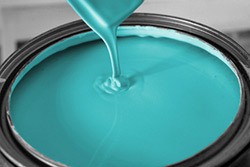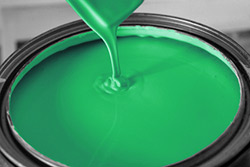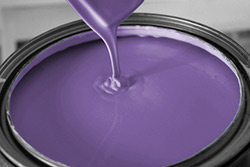When selecting color for a room, keep in mind how those colors make you feel.
The main color of your room can have an effect on your mood, so choose colors that you instinctively like and that reflect your personality.
Fabric, carpeting, furniture and tile are available in a more limited range of colors than paint, so choose them first and then decide on your paint color. Once you've found what you were searching for, limit the number of colors in a room to no more than three or four.
Click on the Color Visualizer and see what combinations of colors would look the best in every room of your home.
Learn how to choose the correct paint colors for your room .
Colors act in three basic ways:
They are active, passive, or neutral, so keep that in mind and match every room's colors to your personal taste and the room's purpose. Light colors are expansive and airy, they make the room seem larger and brighter. Dark colors are sophisticated and bold; they give a large room a more intimate, cozy feel.
Red raises a room's energy level. In the living room or dining room, red draws people together and stimulates conversation. In an entry way, it creates a strong first impression.
Yellow captures the joy of sunshine and communicates happiness. It's perfect for kitchens, dining rooms, and bathrooms, where happy color is energizing and uplifting. In halls, entries, and small spaces, yellow can feel expansive and welcoming.
Blue is considered calming, relaxing, and serene, and is often recommended for bedrooms with lots of natural light or bright bathrooms. Stay with the lighter shades of blue to give you and your loved ones a calm effect.
Green is considered the most restful color for the eye. In a kitchen, a save or medium green cools things down; in a family room or living room, it encourages unwinding but has enough warmth to promote comfort and togetherness. In a bedroom, it's relaxing and pleasant.
Purple is rich, dramatic, and sophisticated. It's associated with luxury as well as creativity, and as an accent or secondary color, it gives a scheme depth. Lighter versions of purple, such as lavendar and lilac, bring a restful quality to bedrooms.
Orange evokes excitement, enthusiasm and is an energetic color. While not a good idea for a living room or for bedrooms, this color is great for an exercise room.
Neutrals like black, gray, white, and brown are used as accents or to calm things down.
These general guidelines are a good starting point in your search for a paint color. But remember that color choice is a very personal matter. You're the one who has to live with your new paint color, so choose a hue that suits you, your family and your lifestyle.





































